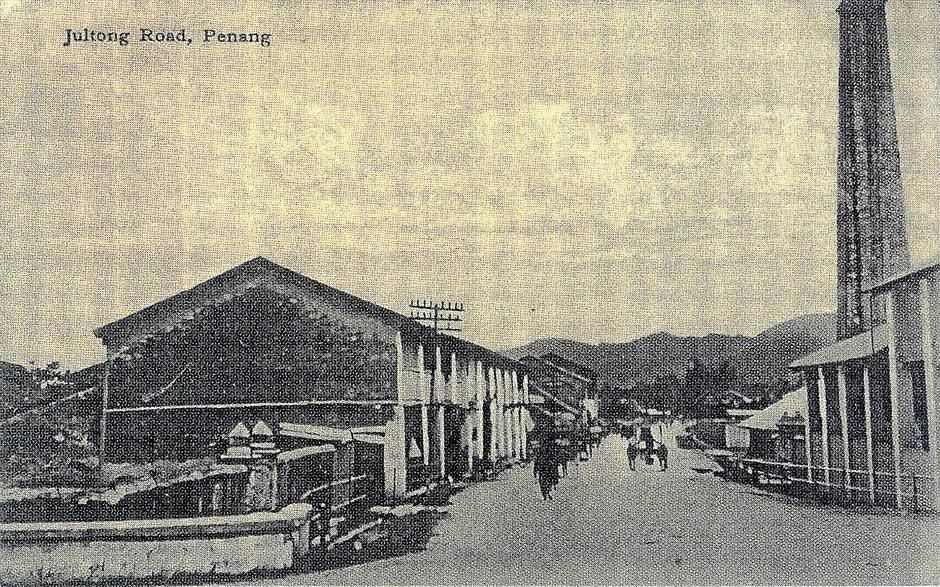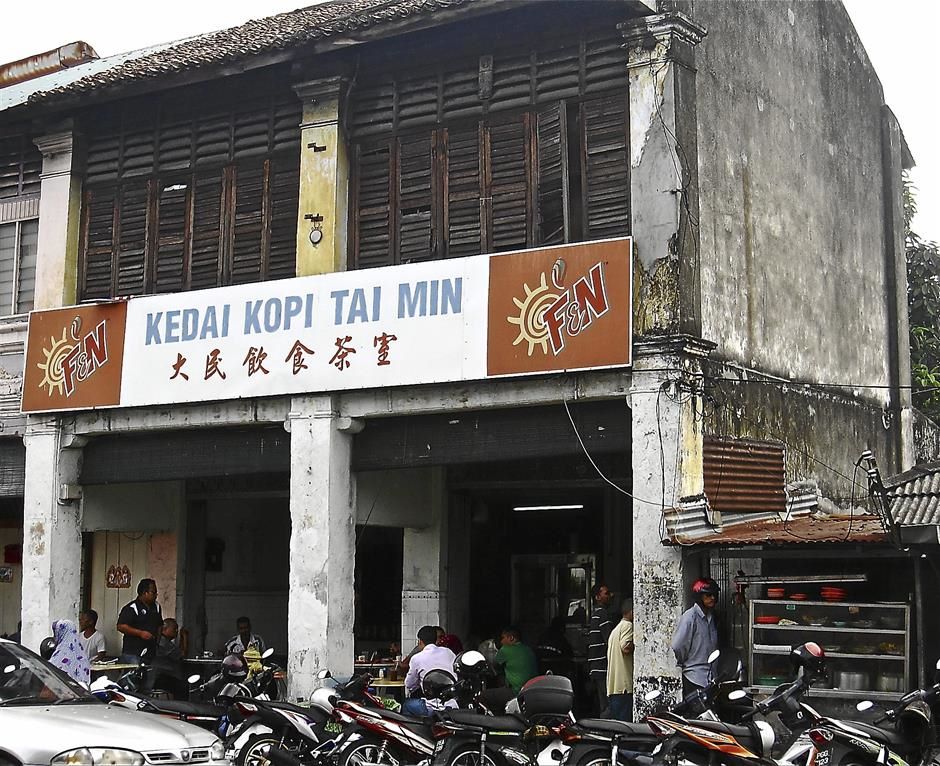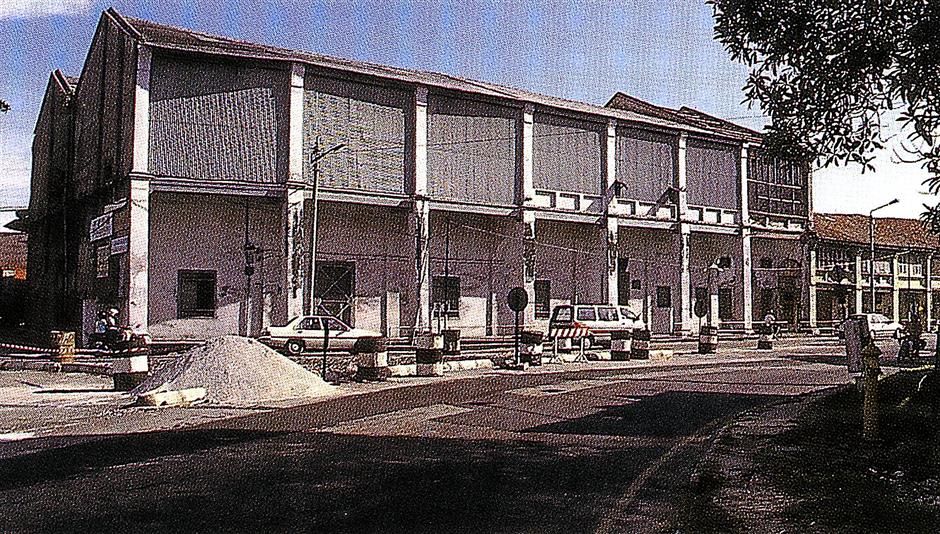
Penangites regard Jelutong as a main road to the Jelutong suburb. — Zhafaran Nasib / The Star
TO THE Penangites of today, Jelutong is simply a main road to the Jelutong suburb. It is also simply the expressway connecting George Town to Bayan Lepas, though the Jelutong Expressway is now renamed the Tun Dr Lim Chong Eu Expressway.
In terms of publicity from a wider national perspective, Jelutong is also identified with outspoken lawyer-politician Karpal Singh who came to be known as the Lion of Jelutong. Sometimes, he is also referred to as Tiger.
Karpal, who saw himself as the voice of the mainly working class constituents in Jelutong, served as MP in the constituency for more than 20 years before losing the seat in 1999.
Jelutong was once regarded as a notorious area with gangsters and thugs, until the 1980s. It was surely one area many motorists passed by carefully, lest they knocked down a local resident. Apparently, street justice would be quickly meted out to anyone who broke the rules.
It did not help that another notorious area — Perak Lane — is a major road off Jelutong, with regular gangland fights and police raids.
But much of what the younger Penangites see of Jelutong today is vastly different from the Jelutong of old.
It was once a coastal village where the Jelutong tree or dyera costulata — which can grow up to 60m tall — grew in abundance, hence the name.
There was a thriving fishing community and the mangrove swamps provided a good source of livelihood to many residents; not only for its fish and crabs, but as a source for the woodcutters and charcoal makers.
Bakau Street (Mangrove Street), a minor road off Jalan Jelutong, was the centre for the making of firewood and charcoal.
Older residents also remember that fireflies were common in the area.
There is a different ambience today. The wooden houses with attap or zinc roofs soon gave way to high-rise buildings and shophouses although some residents have refused to give in to the growing tide of development. Along the busy main road, one can still see a soy sauce factory or two standing like a monument to the past.
My colleague, who once wrote about the six-room attap mansion that his family grew up in, would still tell stories about the bucket latrine system that was still present right up to the 1990s.
The family house has since been demolished and he was surprised, on a recent visit, to see that many old temples along the road have been demolished and the deities have now moved into modern-day dwellings.
In talking about Jelutong Road, another connection must surely be Sungai Pinang.
It is at Jelutong that this river meets the sea. For those of us in Penang who go swimming in the beaches of Batu Feringghi and Telok Bahang, Sungai Pinang, which begins as a pristine tributary in that part of the island is quite different once it reaches Jelutong.
When I was growing up in Penang in the 1970s, the river was terribly smelly. Today, it is still classified as a Class IV river with its water heavily polluted with residential, industrial and commercial liquid and solid waste.
Most of us saw the river simply as a large sewer then even though at that time, people would still hang around the area to buy fresh catch from fishermen returning from the sea.
It is hard to imagine that this estuary was once an active waterway used by the Acehnese, Malay and Indian traders.
According to the Penang Postcard Collection 1899-1930s by Khoo Salma Nasution and Malcolm Wade, located near the river mouth, there was a small resting place at the site of the present Masjid Maqbul.
“According to oral tradition, the Acehnese came to Penang before Light’s time and sold their wares in an open space called Teluk Jelutong, now called Kampung Pulau, at Perak Road,” they wrote, adding that villages flourished along the river.
The former Khie Heng Bee Mills building is still visible today, a reminder of the first industrial boom in the late 19th century, which saw white rice milled and boiled in large vats before being loaded on to boats, according to Khoo Salma.
There was even an “aerial tramway” or cable car, which was used to transport grain and copra between the drying area on one side and the mills near the waterfront, at the sprawling site.
This is the part of Jelutong that is close to the city centre but at the other end of the main road nearer to Gelugor, there is a different Jelutong.
Here, you still have the bustling Jelutong Market near the area where there is a big number of Malays and Indian Muslims.
This is why Jelutong is also home to the nasi kandar.
According to many Penangites, one of the best nasi kandar stores is the one operating at Kedai Kopi Tai Min, directly across the police station.
This newspaper previously report that the “Chinese coffeeshop in Jalan Jelutong is always brimming with a multi-racial breakfast crowd. It has been that way since the famous nasi kandar stall opened here some five decades ago”.
The family-run nasi kandar business is now run by Anwar Amir, whose grandfather sailed to then Malaya from India.
Interestingly enough, there is also a shop in Damansara Jaya named Restoran Syed Abu (Nasi Kandar Jelutong), a testimony to the popularity of the shop on the island.
In the old days, one has to go through Jelutong Road to get to Bayan Lepas and beyond but now most motorists bypass the main road and use the expressway instead.
Still, there is a quaintness about this part of Jelutong which is actually the beginning of Jelutong Road. Nearby is Bukit Dumbar, a reservoir buried beneath a hillock that was used as a picnic spot for the nearby schoolboys but as a lovers’ haunt by courting couples in the night.
And this is also where the Nicol David International Squash Centre is located.








